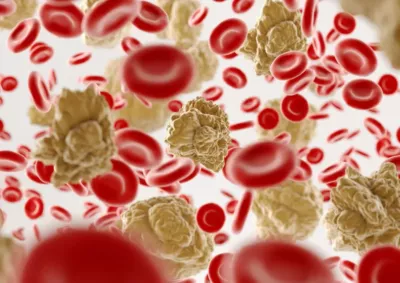NEWS & INSIGHTS: Global Public Health
In the battle against HIV and AIDS, South Africa stands at the forefront, facing one of the most severe epidemics in the world. With an estimated 7.7 million people living with the virus, the impact of HIV/AIDS in the country is devastating and far-reaching. This comprehensive overview aims to shed light on the realities faced by South Africa and offer insight into the challenges that persist.
As we delve into the multitude of issues surrounding HIV and AIDS in South Africa, we’ll explore the socio-economic factors, stigma, and cultural barriers that contribute to the spread of the virus. Through a compassionate lens, we’ll examine the toll HIV and AIDS take on individuals and communities, the efforts made to combat the epidemic, and the progress achieved so far.
With a multitude of resources, research, and organizations dedicated to finding a cure and providing support, it’s crucial to understand the impact of HIV and AIDS in South Africa. Together, we can raise awareness, challenge stereotypes, and work towards a future where HIV and AIDS are no longer a pervasive threat.
The impact of HIV and AIDS in South Africa
HIV and AIDS statistics in South Africa paint a grim picture. According to the latest data, the country has the highest number of people living with HIV in the world. With a prevalence rate of approximately 20%, nearly one in five South Africans is infected with the virus. This epidemic has had a profound impact on the country’s population, economy, and healthcare system.
 The social and economic consequences of HIV and AIDS are extensive. In addition to the loss of life, the disease has resulted in a significant burden on healthcare resources, reduced workforce productivity, and increased poverty levels. Families are torn apart, leaving children orphaned and vulnerable. Moreover, the stigma surrounding HIV and AIDS further exacerbates the challenges faced by individuals and communities.
The social and economic consequences of HIV and AIDS are extensive. In addition to the loss of life, the disease has resulted in a significant burden on healthcare resources, reduced workforce productivity, and increased poverty levels. Families are torn apart, leaving children orphaned and vulnerable. Moreover, the stigma surrounding HIV and AIDS further exacerbates the challenges faced by individuals and communities.
The government of South Africa has recognized the urgency of addressing this epidemic and has implemented various initiatives to combat the spread of HIV and AIDS. These efforts include comprehensive prevention programs, increased access to testing and treatment, and campaigns aimed at reducing stigma and discrimination. While progress has been made, there are still significant challenges that need to be overcome.
READ | Unlocking Success in Public Health Management: The Role of Consulting
Factors contributing to the spread of HIV and AIDS in South Africa
The South African government has made significant strides in addressing the HIV and AIDS epidemic. The implementation of the National Strategic Plan on HIV, TB, and STIs, as well as the provision of free antiretroviral therapy (ART), has resulted in increased access to treatment and care. The government has also prioritized prevention efforts, such as promoting condom use and implementing programs to prevent mother-to-child transmission.
However, challenges persist. The healthcare system is often overwhelmed, and shortages of healthcare professionals and resources hinder the delivery of quality care. Additionally, the stigma and discrimination associated with HIV and AIDS continue to be major barriers to testing and treatment. Efforts to address these challenges require a multi-faceted approach, involving collaboration between government, civil society, and international organizations.
The social and economic consequences
Prevention is a crucial component in the fight against HIV and AIDS. South Africa has implemented various prevention programs, including comprehensive sex education in schools, condom distribution, and the promotion of voluntary medical male circumcision. These initiatives aim to empower individuals with knowledge and tools to protect themselves from HIV infection.
Treatment is equally important, and South Africa has made significant progress in providing access to antiretroviral therapy. The government has implemented the Test and Treat policy, which ensures that all individuals diagnosed with HIV are immediately initiated on treatment. This approach not only improves the health outcomes of those living with HIV but also reduces the risk of transmission.
Support and resources for individuals affected by HIV and AIDS
South Africa’s fight against HIV and AIDS is marred by numerous challenges and barriers. Socio-economic factors play a significant role in the spread of the virus. Poverty, lack of access to healthcare, and limited education exacerbate the problem, making it difficult for individuals to protect themselves and seek appropriate treatment. High levels of unemployment and inequality further compound the issue, creating an environment where HIV and AIDS thrive.
 Stigma surrounding HIV and AIDS remains a major obstacle in South Africa. Discrimination and prejudice prevent individuals from seeking testing, treatment, and support. Fear of judgment and ostracization drives many to hide their status, perpetuating the cycle of infection. Addressing stigma requires comprehensive education campaigns that challenge stereotypes and promote understanding and empathy.
Stigma surrounding HIV and AIDS remains a major obstacle in South Africa. Discrimination and prejudice prevent individuals from seeking testing, treatment, and support. Fear of judgment and ostracization drives many to hide their status, perpetuating the cycle of infection. Addressing stigma requires comprehensive education campaigns that challenge stereotypes and promote understanding and empathy.
Cultural barriers also contribute to the spread of HIV and AIDS in South Africa. Traditional beliefs, practices, and gender norms can hinder prevention efforts. For example, gender-based violence and unequal power dynamics put women at a higher risk of infection. Cultural sensitivities must be taken into account when designing interventions to ensure their effectiveness.
Conclusion: Moving forward in the fight against HIV and AIDS in South Africa
Despite the challenges, South Africa has made significant strides in providing support and resources for individuals affected by HIV and AIDS. The government, along with non-profit organizations and international partners, has implemented various strategies to combat the epidemic.
HIV testing and counseling services are widely available, aiming to encourage early detection and reduce transmission rates. Antiretroviral therapy (ART) has been introduced, providing life-saving treatment to those living with HIV. These efforts have helped improve the quality of life for many individuals and reduce HIV-related deaths.
In addition to medical support, psychosocial services are crucial for individuals affected by HIV and AIDS. Counseling, support groups, and community-based organizations play a vital role in providing emotional support, combating stigma, and empowering those living with the virus. Education programs targeting both the general population and specific high-risk groups are also essential in raising awareness and promoting prevention.
Share This Post, Choose Your Platform!
In the battle against HIV and AIDS, South Africa stands at the forefront, facing one of the most severe epidemics in the world. With an estimated 7.7 million people living with the virus, the impact of HIV/AIDS in the country is devastating and far-reaching. This comprehensive overview aims to shed light on the realities faced by South Africa and offer insight into the challenges that persist.
As we delve into the multitude of issues surrounding HIV and AIDS in South Africa, we’ll explore the socio-economic factors, stigma, and cultural barriers that contribute to the spread of the virus. Through a compassionate lens, we’ll examine the toll HIV and AIDS take on individuals and communities, the efforts made to combat the epidemic, and the progress achieved so far.
With a multitude of resources, research, and organizations dedicated to finding a cure and providing support, it’s crucial to understand the impact of HIV and AIDS in South Africa. Together, we can raise awareness, challenge stereotypes, and work towards a future where HIV and AIDS are no longer a pervasive threat.
The impact of HIV and AIDS in South Africa
HIV and AIDS statistics in South Africa paint a grim picture. According to the latest data, the country has the highest number of people living with HIV in the world. With a prevalence rate of approximately 20%, nearly one in five South Africans is infected with the virus. This epidemic has had a profound impact on the country’s population, economy, and healthcare system.
 The social and economic consequences of HIV and AIDS are extensive. In addition to the loss of life, the disease has resulted in a significant burden on healthcare resources, reduced workforce productivity, and increased poverty levels. Families are torn apart, leaving children orphaned and vulnerable. Moreover, the stigma surrounding HIV and AIDS further exacerbates the challenges faced by individuals and communities.
The social and economic consequences of HIV and AIDS are extensive. In addition to the loss of life, the disease has resulted in a significant burden on healthcare resources, reduced workforce productivity, and increased poverty levels. Families are torn apart, leaving children orphaned and vulnerable. Moreover, the stigma surrounding HIV and AIDS further exacerbates the challenges faced by individuals and communities.
The government of South Africa has recognized the urgency of addressing this epidemic and has implemented various initiatives to combat the spread of HIV and AIDS. These efforts include comprehensive prevention programs, increased access to testing and treatment, and campaigns aimed at reducing stigma and discrimination. While progress has been made, there are still significant challenges that need to be overcome.
READ | Unlocking Success in Public Health Management: The Role of Consulting
Factors contributing to the spread of HIV and AIDS in South Africa
The South African government has made significant strides in addressing the HIV and AIDS epidemic. The implementation of the National Strategic Plan on HIV, TB, and STIs, as well as the provision of free antiretroviral therapy (ART), has resulted in increased access to treatment and care. The government has also prioritized prevention efforts, such as promoting condom use and implementing programs to prevent mother-to-child transmission.
However, challenges persist. The healthcare system is often overwhelmed, and shortages of healthcare professionals and resources hinder the delivery of quality care. Additionally, the stigma and discrimination associated with HIV and AIDS continue to be major barriers to testing and treatment. Efforts to address these challenges require a multi-faceted approach, involving collaboration between government, civil society, and international organizations.
The social and economic consequences
Prevention is a crucial component in the fight against HIV and AIDS. South Africa has implemented various prevention programs, including comprehensive sex education in schools, condom distribution, and the promotion of voluntary medical male circumcision. These initiatives aim to empower individuals with knowledge and tools to protect themselves from HIV infection.
Treatment is equally important, and South Africa has made significant progress in providing access to antiretroviral therapy. The government has implemented the Test and Treat policy, which ensures that all individuals diagnosed with HIV are immediately initiated on treatment. This approach not only improves the health outcomes of those living with HIV but also reduces the risk of transmission.
Support and resources for individuals affected by HIV and AIDS
South Africa’s fight against HIV and AIDS is marred by numerous challenges and barriers. Socio-economic factors play a significant role in the spread of the virus. Poverty, lack of access to healthcare, and limited education exacerbate the problem, making it difficult for individuals to protect themselves and seek appropriate treatment. High levels of unemployment and inequality further compound the issue, creating an environment where HIV and AIDS thrive.
 Stigma surrounding HIV and AIDS remains a major obstacle in South Africa. Discrimination and prejudice prevent individuals from seeking testing, treatment, and support. Fear of judgment and ostracization drives many to hide their status, perpetuating the cycle of infection. Addressing stigma requires comprehensive education campaigns that challenge stereotypes and promote understanding and empathy.
Stigma surrounding HIV and AIDS remains a major obstacle in South Africa. Discrimination and prejudice prevent individuals from seeking testing, treatment, and support. Fear of judgment and ostracization drives many to hide their status, perpetuating the cycle of infection. Addressing stigma requires comprehensive education campaigns that challenge stereotypes and promote understanding and empathy.
Cultural barriers also contribute to the spread of HIV and AIDS in South Africa. Traditional beliefs, practices, and gender norms can hinder prevention efforts. For example, gender-based violence and unequal power dynamics put women at a higher risk of infection. Cultural sensitivities must be taken into account when designing interventions to ensure their effectiveness.
Conclusion: Moving forward in the fight against HIV and AIDS in South Africa
Despite the challenges, South Africa has made significant strides in providing support and resources for individuals affected by HIV and AIDS. The government, along with non-profit organizations and international partners, has implemented various strategies to combat the epidemic.
HIV testing and counseling services are widely available, aiming to encourage early detection and reduce transmission rates. Antiretroviral therapy (ART) has been introduced, providing life-saving treatment to those living with HIV. These efforts have helped improve the quality of life for many individuals and reduce HIV-related deaths.
In addition to medical support, psychosocial services are crucial for individuals affected by HIV and AIDS. Counseling, support groups, and community-based organizations play a vital role in providing emotional support, combating stigma, and empowering those living with the virus. Education programs targeting both the general population and specific high-risk groups are also essential in raising awareness and promoting prevention.




